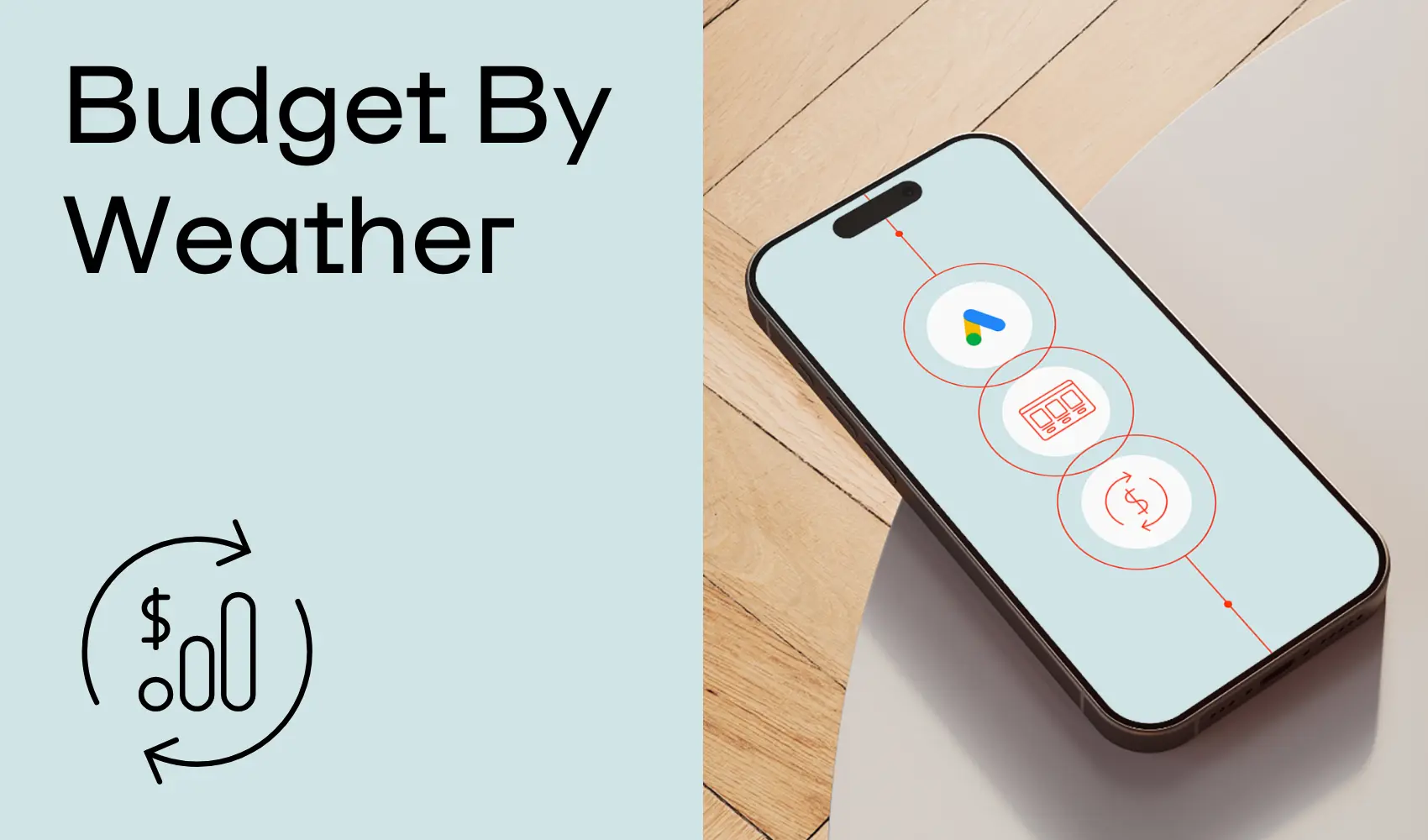Many advertisers have a limited budget for pay-per-click (PPC) advertising, which makes it difficult to maximize results.
One of the first questions that often comes up is, "How much should we spend?" Precisely this, is a crucial question that sets the tone for the entire PPC strategy and how well branched Google Ads account one can develop.
Set expectations for your account
With a smaller budget, it is important to have the expectations of the account's performance in order to make quick decisions. Only a mature PPC expert who can interpret multiple parameters can make such qualified quick decisions, based on multiple factors.
Relevant question: How much should our company spend on PPC?
To begin, you need to balance your company's PPC budget with the cost, volume and competition among searches in your industry. This is followed by the structure of the account, which should branch out according to how many products/services you have. If you have many products or services in a highly competitive industry, you should select the ones that you think will sell/work best.
First, determine your daily budget. For example, if the monthly budget is SEK 20,000, the daily budget would be set to approximately SEK 666 per day for the entire account.
The daily budget will also determine how many campaigns you can run simultaneously on the account because this SEK 666 will be divided between all campaigns.
Be aware that Google Ads and Microsoft Ads may sometimes exceed the daily budget to maximize results. However, the total monthly budget will not be exceeded as Google Ads can "borrow" budget from the next period if the tool considers it time to spend the money earlier.
Choose the right conversions
Advertisers often have multiple conversion goals per account. A limited budget will limit both the number of campaigns and conversions - so it is important to set up "artificial goals" and preferably create a group of conversion goals to increase the number of conversions and thus "train" Google AI and machine learning with more conversion data. I will not go over data collection methods and improved conversions in this post, but I really recommend that you send all conceivable variables in connection with your conversions and of course the user's data with the conversions that allow this.
Common conversions can be:
- Sale/purchase
- Form submissions
- Call
- Downloads
I recommend also setting up:
- Started forms
- Products added to cart
- Initiated cash payments
- Link click
Don't forget to set your campaigns against all of these conversions for Google to understand which important events are performed by users after clicking on ads. This part of the setup is absolutely critical to how well your ads can perform on a low budget. You simply have to feed the machine with a little less quality conversion data if you can't collect enough "regular" conversions.
Place orientations
Place orientations is a fundamental factor in reaching the right target groups.
Although it seems obvious, you should also consider how to refine this to direct the limited budget to core areas. For example:
- You can define your targets by county, city, zip code or even a radius around your business.
- Choosing places to aim should be focused on the results.
- The smaller the geographic area, the less traffic you will get, so balance relevance with budget.
- Consider adding negative locations where you don't do business to prevent irrelevant clicks from taking up precious budget.
- Use the 'People in your targeted locations' setting to ensure you only reach people in the area you want to advertise. However, there is a large dark population here of users with privacy and VPN settings, as well as people who are away, but can still search for your services.
If reporting shows targeted locations where campaigns are ineffective, consider removing targeting for those areas. You can also try a placement bid modifier to reduce ad serving in those areas.
Schedule the ads
With a smaller budget, it can be beneficial to limit ads to only appear during the time you can actually handle requests.
If you're selling online, you're always open, but review the “day and hour” reporting over time to determine if there are hours of the day with a negative return (ROI).
Limit running ads if reporting shows hours of the day when campaigns are ineffective. This could be low CTR, engagement rate or conversion rate.
Before making these settings, you need to have a reasonable idea of how long your typical customer journey is. Customer journeys are longer than ever and it is not at all certain that the times when you get the most clicks on your ads also lead to the most conversions. Therefore, you should be careful when scheduling your ads, as interest in your services/products may appear at one time, but a conversion may occur at a completely different time.
read more about The complex customer journey.
Negative keywords
A well-planned list of negative keywords is a golden tactic for controlling budgets.
The purpose is to prevent your ad from appearing on searches that are not relevant to your business.
- Proactively generate negative keywords by brainstorming keyword ideas that may incorrectly trigger ads.
- Review the search terms report to find irrelevant searches that have already resulted in impressions or clicks.
- Use the Google Ads keyword planner and see what other search terms appear as suggestions. Copy any search terms that are irrelevant and add them to a list.
- This process is ongoing and my recommendation is to review search term reports on a daily basis.
Smart bidding
Smart bidding is a revolution for effective ad campaigns. Powered by Google AI, it automatically adjusts bids to show ads to the right audience within budget.
The AI optimizes the bid for each auction, with the goal of maximizing conversions while staying within your budget constraints.
Available smart bid strategies include:
- Maximize conversions
Maximizing conversions with audience targeting is an art in itself, so use the most relevant options for your budget, including topics, placements, demographics, and more.
Remarketing to your website visitors is a smart strategy to include in your display campaigns to re-engage your visitors based on their behavior on your website. Here there are several different types of possibilities with everything from static to dynamic remake campaigns.
Let your ad results from placements, audiences, and more guide your optimizations toward the best fit for your business.
Do you have an existing list of email addresses and phone numbers of your customers? Then upload these to Google Ads and use this qualitative data about your customers to train the machine learning. However, there are criteria for being able to use it customer matching in Google Ads.
Performance Max Promotions
Performance Max or (PMax) is available in both Google Ads and Microsoft Ads.
In short, automation is used to maximize conversion results by serving ads across multiple channels and with automated ad formats based on all the assets you upload to the campaign.
This type of campaign can be useful for limited budgets by using AI to create assets, select channels and target audiences in a single campaign. It is important to upload a lot of good content in these campaigns for them to work well. Google's latest guidelines are quantity and quality.
Since the success of a Performance Max campaign depends on the use of conversion data, this data needs to be available and reliable. On Google Marketing Live 2024 talked about "Good Data is Good AI", which suggests that their AI models adapt better when given more qualitative data to start from.
Aim for less competitive keywords
Some keywords can have very high cost per click (CPC) in a competitive market. Research keywords to compete effectively with a smaller budget. User searches on Google have become more and more defined in connection with AI in the search results, so try to avoid the general search terms and instead focus on other search terms with less competition in the beginning.
Used Google Analytics 4 to discover organic searches that lead to your website and tools like Google the keyword planner in your Google Ads account to compare and get estimates.
Manage "expensive" keywords
In addition to the tip above, if a keyword has high volume and high cost, consider restructuring those keywords into their own campaign for easier monitoring and possibly more restrictions.
Every click counts
If you implement these tactics in Google Ads, you will have better conditions with a lower budget. Remember that there are several other strategies to use in Google Ads to save money. For example, like keeping track of your locations and excluding content such as apps etc
Succeeding with small PPC budgets means strategic campaign management, data-driven decisions and constant optimization. Small budget does not always mean that a Google Ads account takes less time, but it can also mean more time for management.
read more about 9 Tips for scaling up Google Ads with a low budget: Lead Gen




